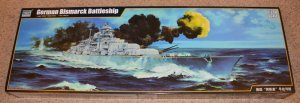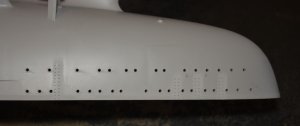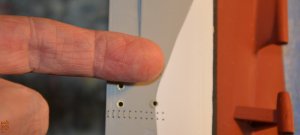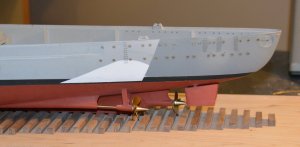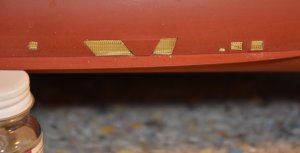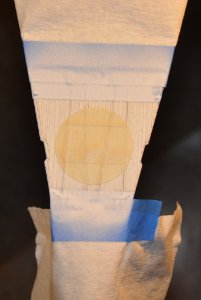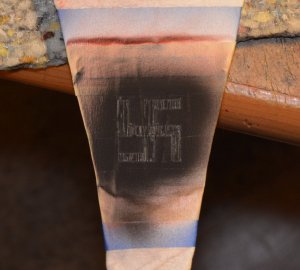Hi everyone.
This is my first posting to the SOS forum.
A little bit of history. I have been building models for a while, for my HO train set, but got interested in quality ship modeling a few years ago, after I retired. My first wooden model, just to see how it felt, was the Blue Shadow. I liked the result and moved on to the Wasa. I was happy with that, and then tried my hand at the Santisima Trinidad. Comparing my work to the museum quality of Donnies build, it comes in favorably in 2nd place. I did one thing different with the Santisima build in that I rigged the ship backwards, ie, I tied all the rigging lines to the belaying pins, etc. before pulling them up to their ultimate tie off point. Since I had found that tieing off to the belaying pins was a pain in the ... as the rigging progressed, doing it backwards eliminated that problem.
About a year ago, I saw the Trumpeter Bismarck in one of the catalogs I get. It has been a long time since I worked with a plastic model, but the ship caught my eye and I bought it, along with the detail kit that was optional. I had no idea of what I was in for. Working with 1/200 scale photo etched parts is an exercise in patience and working with tweezers and magnifying glasses. But I have patience and got it done. Right now the ship is almost finished, I have a few details to add, but I will start posting pics for those of you who will appreciate the detail and effort.
I have attached a picture of the box cover to give you an idea of it's size, the hull is 50" long.
Jim
This is my first posting to the SOS forum.
A little bit of history. I have been building models for a while, for my HO train set, but got interested in quality ship modeling a few years ago, after I retired. My first wooden model, just to see how it felt, was the Blue Shadow. I liked the result and moved on to the Wasa. I was happy with that, and then tried my hand at the Santisima Trinidad. Comparing my work to the museum quality of Donnies build, it comes in favorably in 2nd place. I did one thing different with the Santisima build in that I rigged the ship backwards, ie, I tied all the rigging lines to the belaying pins, etc. before pulling them up to their ultimate tie off point. Since I had found that tieing off to the belaying pins was a pain in the ... as the rigging progressed, doing it backwards eliminated that problem.
About a year ago, I saw the Trumpeter Bismarck in one of the catalogs I get. It has been a long time since I worked with a plastic model, but the ship caught my eye and I bought it, along with the detail kit that was optional. I had no idea of what I was in for. Working with 1/200 scale photo etched parts is an exercise in patience and working with tweezers and magnifying glasses. But I have patience and got it done. Right now the ship is almost finished, I have a few details to add, but I will start posting pics for those of you who will appreciate the detail and effort.
I have attached a picture of the box cover to give you an idea of it's size, the hull is 50" long.
Jim


